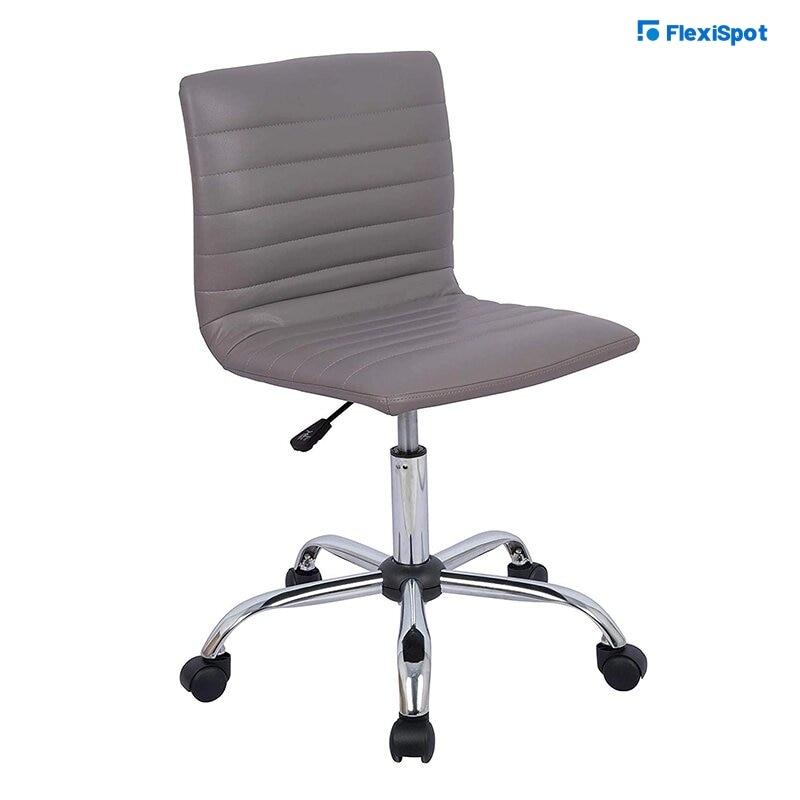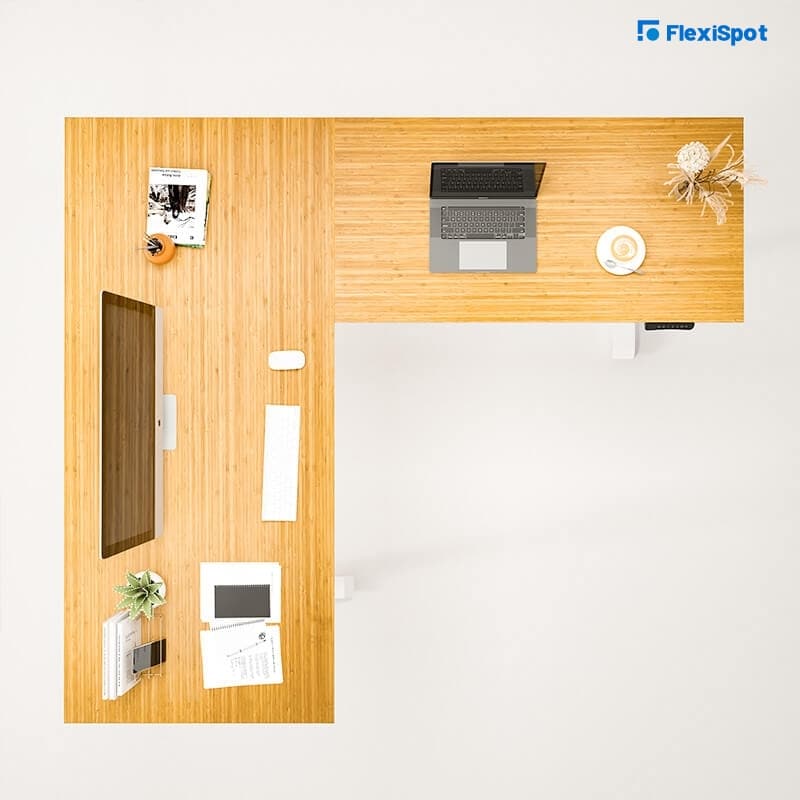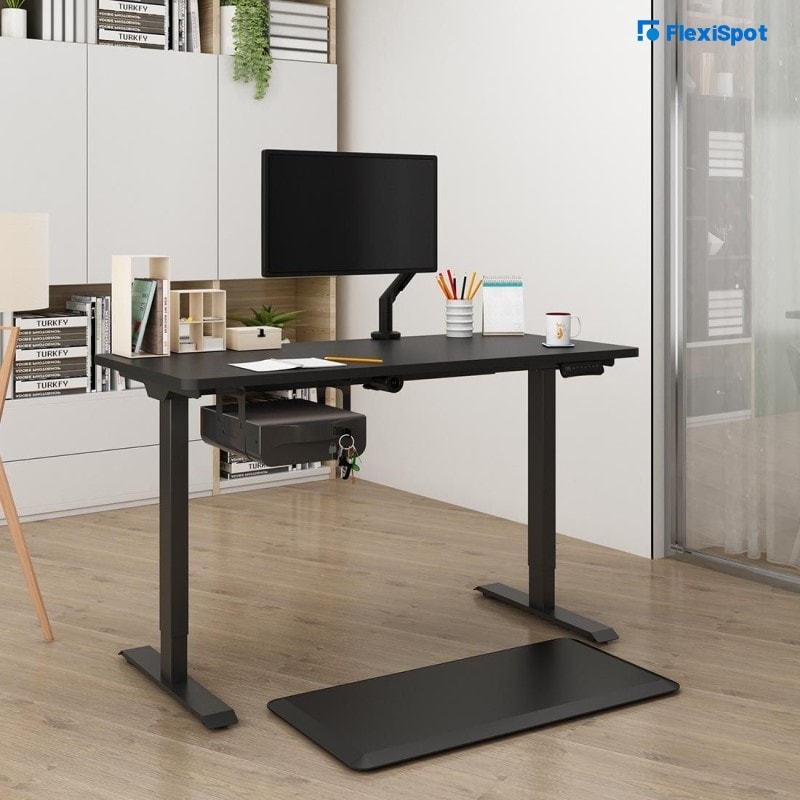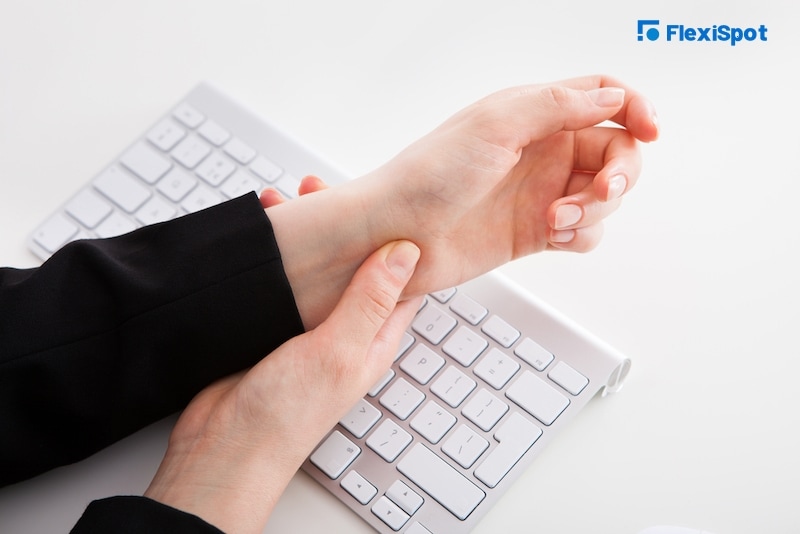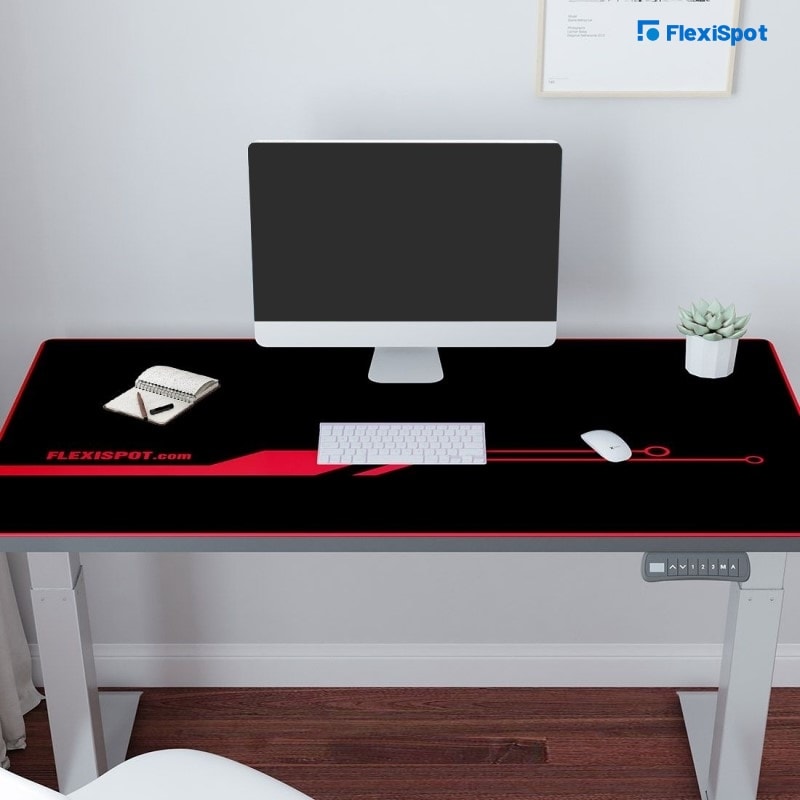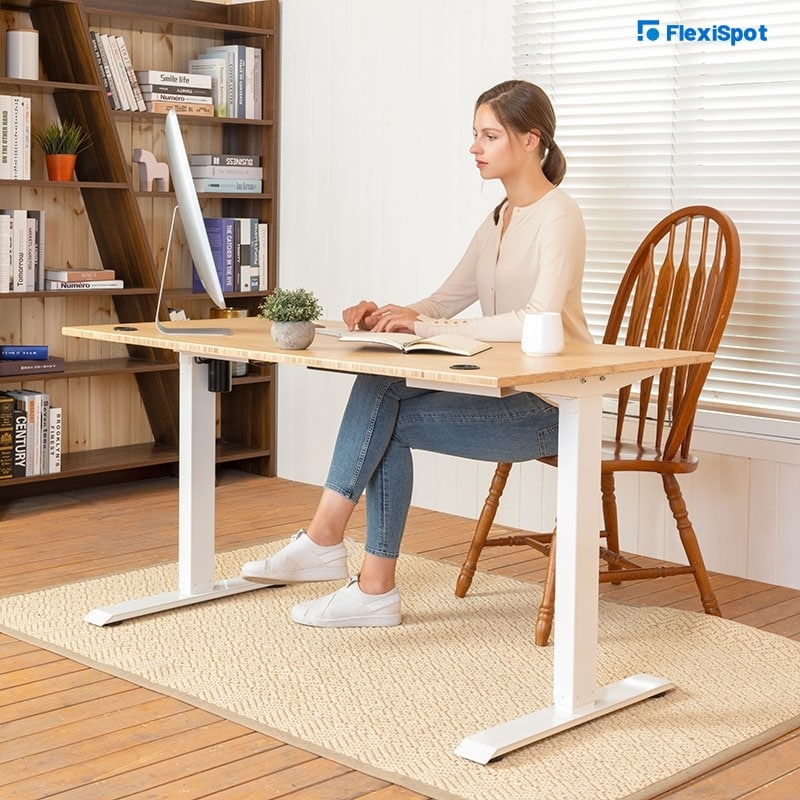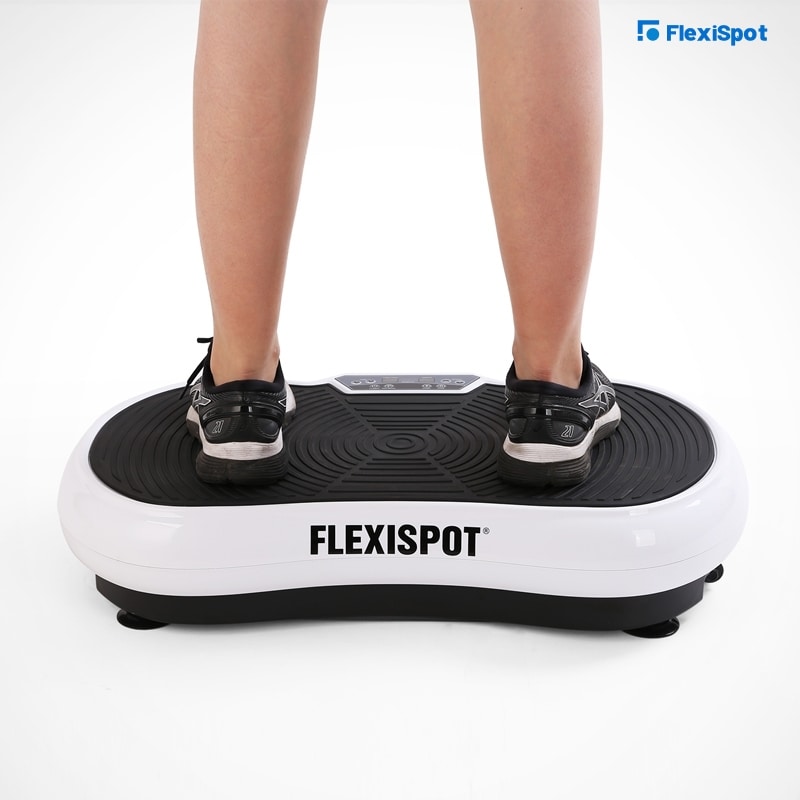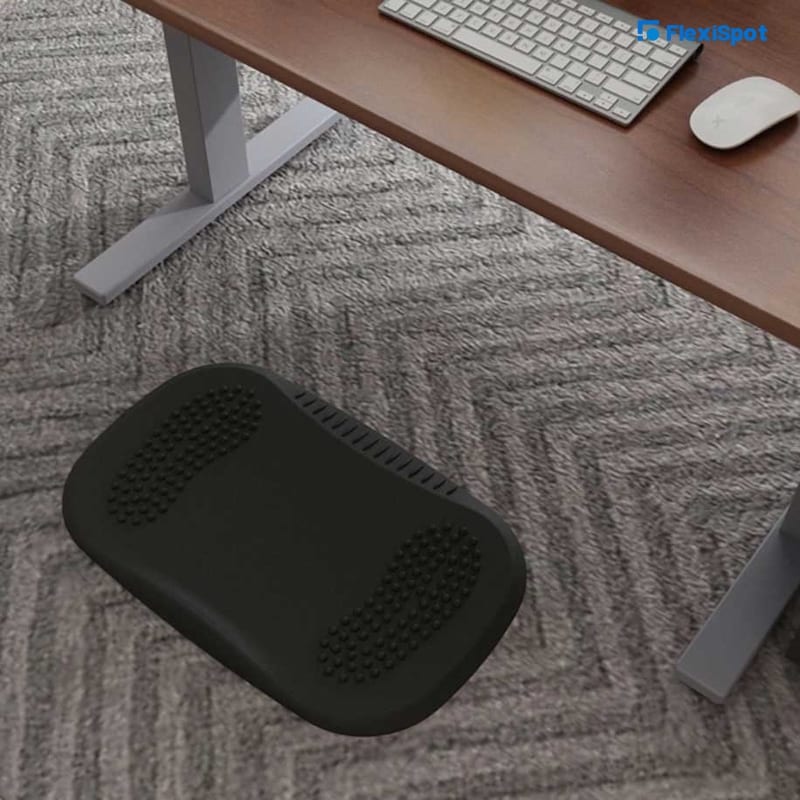Office staff spends a large proportion of their working life at a desk. The desk is possibly the most significant piece of equipment in an office. Still, despite this, it is often overlooked as an item for ergonomics assessments, and employers may fail to provide suitable chairs, desks, and other equipment.
In particular, front-end office staff are affected due to their reliance on computer equipment, which often has to be configured in ways that can lead to postural problems. While it may not seem like much, the tasks performed by front-end office staff can be quite physically demanding. From answering phone calls to typing up reports to using the photocopier every day, all of these activities place extra strain on our arms and hands when done repeatedly.
Proper ergonomics offers a viable way to reduce on-the-job injuries by promoting health and wellness. When there are ergonomic issues in an office setting, they tend to affect more than just one person - a whole team can end up with repetitive strain injuries (RSIs) through constant exposure to poor workstation ergonomics. Unfortunately, secretaries, receptionists, and other front-end workers usually fall low in the pecking order when it comes to ergonomic considerations.
This article looks at five ergonomic issues affecting front-end office staff and how they can be solved.
1. Poor Posture
Even if you aren't one of those guys wearing a shirt, tie, and pants all at the same time, you should probably still sit up straight. Why? Well, first off, because it'll make you look smarter, which should be reason enough for anyone right there. But secondly, long periods of sitting hunched over can lead to all sorts of pain and discomfort and is not optimum work posture. Also, research has repeatedly shown good posture to improve your mood, make you feel more confident, and generally make you feel like more of a boss than if you were slumped over like a sad sack.
What Are the Practical Solutions to Poor Posture?
It’s hard for a receptionist not to slouch or lean too close to their desk when attending to office visitors. So, one of the most practical ways of addressing this is getting them an ergonomic office chair.
The right chair should feature loads of adjustable features. This allows your receptionist to position the chair to foster a more healthy posture while resting their back comfortably or attending to guests.
An ergonomic office chair also helps your front end employees avoid the following pitfalls:
Sitting in slumped positions that bends the spine onto one side
Bending the knees and legs backward or keeping their arms crossed, which leads to poor blood circulation
Dangling their legs or not supporting the feet
Craning the neck over long intervals to view monitors, reach telephones, or access documents
Sitting positions that don’t fully support the lower back
Not supporting their elbows, which adds loads of weight and strain on their shoulders
These may seem like minor changes but are a sure way of improving health and wellness. It will certainly reduce the number of sick days and medical co-pay expenses.
2. Office Layouts and Equipment Positioning
Positioning office equipment in a way that makes them more accessible is essential. But, this is usually a challenge, especially when you have limited office space to play with. Most receptionist and secretary desks feel cramped, and some are dimly lit. Put yourself in your receptionist’s shoes before making any alterations to their workstation.
So, the trick here is maximizing your space and getting the most utility out of it. That sounds like a tall order. Fortunately, we have some practical ways of dealing with such issues.
How Can You Optimise Your Office Layout through Proper Equipment Positioning?
Look for problems with lighting.
If possible, avoid bright lights shining right into your eye line - not only does it make working difficult, but it can cause stress. Instead, use indirect light sources such as lamps with shading attachments or indirect overhead lighting that spreads brightness across the ceiling.
Adjust the height of your computer monitor appropriately
Place it slightly below eye level to prevent neck strain from looking upwards for too long, or at least have the top of the screen visible from across the room, so you don't have to look up too much. Also, make sure that there is no glare on the screen from any direction - including windows behind you.
Are They Right or Left-Handed?
Laying out office tools like the telephone or stationery within access of your receptionist’s dominant hand can bring a world of change.
For instance, if they are left-handed but all the equipment is placed to the right, it can cause loads of muscle strain. Positioning equipment within access of the dominant hand ensures they don't have to constantly stretch across their work area.
How Cramped Is the Workstation?
Most office managers underestimate the amount of paperwork that front-end staff has to handle. The result is usually a claustrophobic nightmare. It's hard to work, let alone find the right form or paperwork when required.
You spend most of the day filing paperwork behind a counter only to have people not put it away nicely when they are done? Do they stack it neatly, or do they leave stray files all over the place? No matter what side of this debate you are on, there is a solution.
A mobile file cabinet offers an ideal way to enhance productivity and space optimization. These cabinets roll on casters so they can be shared among various workstations.
An under-the-desk drawer can also help reduce the clutter as it offers your front-end staff a place to stow away personal effects.
3. Keyboard and Mouse-Related Strain
Flexing your arms or wrists can cause untold muscular strain. A well-laid-out office desk allows you to maintain the right space allowance between you and your keyboard or mouse. This may seem like a no-brainer, but you would be surprised how many people don't use ergonomic placement for their keyboard and mouse. Not only can it cause neck pain, wrist pain, headaches, etc. - it's just plain lazy if the person doesn't want to take 5 minutes to properly place their equipment!
The general rule of thumb is to place your keyboard right below your elbows (while sitting), and your mouse should be at elbow level as well. Along with this, make sure that there is enough space between you and your keyboard and monitor. You shouldn't feel cramped while sitting or standing at your desk.
Ways to optimize your keyboard and mouse placement
Keeping The Keyboard Parallel To The Forearm
Leveling the keyboard in such a manner allows you to rest your forearms parallel to the floor. It also ensures your wrists remain in a neutral position, which reduces the strain and weight taken on by your arms.
Trying Out Different Types Of Keyboards
Settling on the ideal keyboard layout is challenging because it’s a highly subjective matter. Some individuals prefer a contoured keyboard, while others may opt for a curved one. Taking such individual considerations into account helps reduce shoulder wrist strain.
So, the best way to address this issue is to have all types of keyboards available in your office. This can also help boost productivity and overall morale.
Mouse Pads For Cushioning And Support
We often underestimate the amount of pressure that a firm office desk can have on the palms. That’s why it helps to have a comfortable and supportive mouse pad. Equipping your desk with a stylish mouse pad not only enhances the aesthetics. But it's also a sure way of avoiding the habit of resting your palms on the edge of the desk, which can lead to carpal tunnel.
Sometimes, a foot pedal comes in handy.
If you are physically challenged or have an upper back strain or neck problem, you can try this out. Ensure that the pedal is placed comfortably under your desk or can be easily reached with your feet. Also, make sure not to rest any weight on the pedals when not in use as they are designed for minimal contact.
4. Sitting for Too Long or a Sedentary Office Life
An office worker's work is never done, and we spend an average of 8.4 hours per day sitting down at a desk, sometimes for more than that if we're working through lunch or finishing some last-minute filing before the end of the day (or catching up on those pesky celebrity blogs).
We all know that sitting down all day isn't good for you (especially if you're at a desk job). Our bodies weren't meant to sit around all day, but unfortunately, most of us don't have much choice in our current line of work. However, standing all day can cause issues as well. While sitting is terrible for your posture, standing all day can leave your back and legs sore and tired! So, it's essential to have a workspace setup that promotes good habits from the start.
How Can You Make Office Life Less Sedentary?
Encouraging Your Front End Staff To Have Their Lunch Away From Their Desk
Break rooms and off-site cafeterias offer a break from the monotony of office work. Unfortunately, Secretaries and receptionists need to constantly man their stations. They are the backbone of your in-office PR initiatives, after all.
A simple solution that works for many companies is empowering their interns and mailroom staff to carry out the functions of receptionists or secretaries. Such a move ensures that your receptionist has someone to man their station should they need to take a deserved break.
Decking out Their Workstations with Exercise Equipment
Stretching out your feet and flexing your legs help in improving blood circulation. This helps reduce muscle strain and the chances of developing high blood pressure. However, exercise equipment can occupy loads of space. This can be a challenge if your office's front end is already cramped.
Getting a Vibration Plate Exercise Machine can help you address this issue. For one, it can fit neatly underneath the office desk. And it also simulates movement while massaging your receptionist’s feet.
Equipping Your Front End Staff with Sit and Stand Desks
Height adjustable or sit and stand desks offer an ideal way to discourage a sedentary office life. They feature controls and alerts that remind you employees when to stand. This encourages proper blood circulation by allowing them to stretch out their ligaments from time to time.
5. Standing for too long
Receptionists usually work from high booths that may be too far from their chairs. The result is they have to stand for long periods, especially if they experience high foot traffic. Eliminating such booths may be unwise in some cases.
This is because your visitors may find it easier to communicate with your receptionists if they are at a certain level of eye contact.
How Can You Ensure Your Front End Staff Don’t Stand for Too Long?
Finding the right chair
Matching a high booth or desk with the right chair offers an excellent way to address this challenge. A height-adjustable swivel desk chair can ensure they have somewhere comfortable to sit as they work.
To top it off, they usually come with footrests, so your receptionists don't have to dangle their legs all day.
Anti-Fatigue Mats
Standing all day on a hardpan office floor can harm your nervous system. This is because your feet have pressure points that correspond to various body organs. That's why simply having a foot massage at the end of a long day can leave you feeling rejuvenated.
You could hire a trained massage therapist to help out your secretary or receptionist occasionally. But, that may be inappropriate and impractical for a professional office environment.
You could have the next best thing in the form of a Standing Desk Anti-Fatigue Mat. It’s tidy and goes for a fraction of the cost of hiring a masseuse.
Other Tips to Help You Address the Ergonomic Concerns of Front End Office Workers
Laying out computer screens 2 inches above the line of sight and at arm’s length helps reduce neck strain.
Adding footrests, wrist pads, and using office chairs with elbow rest can alleviate most of the pressure on the shoulders.
Equipping your front-end staff with headsets can help reduce slouching and neck pain if they usually have to attend to long office calls.
Opting for vibrant lighting not only adds some energy to the workplace but also reduces eye strain.
Conclusion
As you can see, improving your front-end office ergonomics is not that difficult. It requires shifts in your corporate culture. And, you may have to acquire some more ergonomic office equipment. But, your employee's health and wellness should come first.
These tips can help you experience a lower turnover in your front office. They can also ensure there are fewer sick days and encourage workplace morale. You could also hire a professional ergonomist to help you with your office layout.
So there you have it, 5 things that might be making you feel worse at the end of the day and how to deal with them. Don't wait until it's too late! If your job confines you to an office desk for most of the day, then ergonomics is something worth thinking about.

